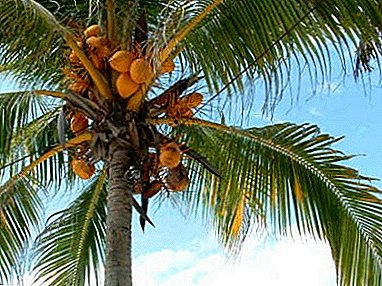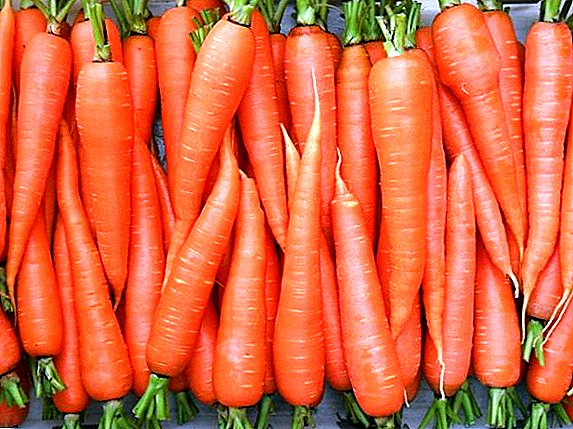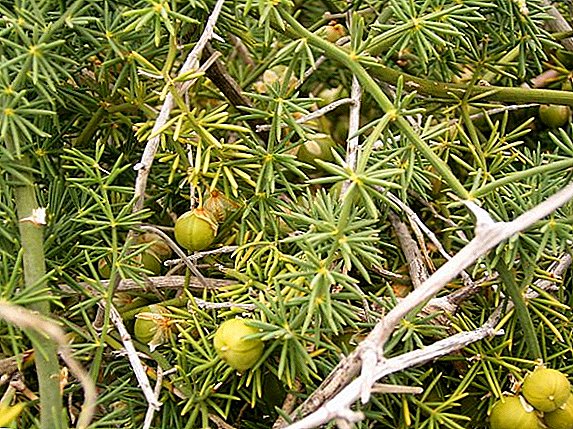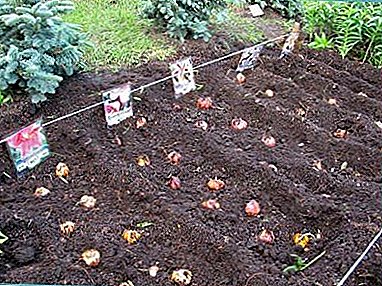
Any food product contains a set of certain beneficial elements and vitamins that affect the body of the consumer. In radish fruits a lot of starch, organic acids, fiber is also present. In addition, they contain glucosides, phytoncides, amino acids and the enzyme lysozyme, under the influence of which the walls of bacteria cells are destroyed.
Such a simple and familiar root crop like green radish is extremely rich and useful. The chemical composition and content of this root and will be discussed later in the article.
Why is it important to know the composition of the root?
We are what we eat - says ancient wisdom, and it is difficult to disagree with it. Knowing the composition of the product, you can understand its properties, which will give an idea of its needs to the person, the range of application or contraindications.
Chemical composition and nutritional value
It is not surprising that radish has a solid set of nutrients. In its composition there are various mineral, vitamin compounds, essential oils and organic acids. Let's take a closer look at it.
Calories per 100 grams
Consider how many calories are in the root. Scientists calculated that 100 grams of this amazing vegetable contains 32 calories, which is 2.25% of the daily value of calories per person of average weight and build. Specifically, one-tenth kilogram of green radish contains:
When fresh, without heat treatment, BJU is:
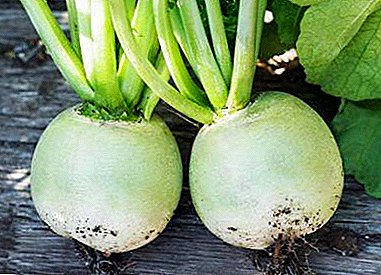 2 g of proteins;
2 g of proteins;- 0.2 g fat;
- 6.5 g of carbohydrates.
Marinated:
- Calorie is 57 kcal.
- Protein 0.9 g
- Fat 0.35 g
- Carbohydrate 15.5 g
In a salad (data may vary depending on the salad recipe):
- Calorie radish will be 40 kcal.
- Protein 1.8 g
- Fats 2 years
- Carbohydrate 5 g.
What vitamins are in 100 g of the product?
- Retinol - 3 * 10-4 mg.
- Thiamine - 0, 03 mg.
- Pyridoxine - 0.06 mg.
- Riboflavin - 0.03 mg.
- Pantothenic acid - 0.2 mg.
- Tocopherol - 0.1 mg.
- Ascorbic acid - 29 mg.
- Nicotinic acid - 0.3 mg.
The glycemic index is an indicator of the level of influence of carbohydrates on the change in blood sugar levels - radish is 15 units.
Green radish is even recommended for diabetics because it lowers blood sugar and stabilizes insulin production.
Macro elements per 100 g:
- Ca - 35 mg.
- P - 26 mg.
- K - 350 mg.
- Na - 13 mg.
- Mg - 21 mg.
Trace elements contained in 100 g of product:
- Fe - 0.4 mg.
- Zn - 0.15 mg.
- Cu - 115 µg.
- Se - 0.7 mcg.
- Mn - 38 mcg.
Benefit
 First of all, it is worth noting the enormous benefits of radish for the gastrointestinal tract and digestive system. Radish contains substances necessary for normal fermentation and trace elements. The fibers of this root helps to remove toxins from the body. Also, this product is low-calorie, which makes it an excellent component for any diet menu aimed at losing weight.
First of all, it is worth noting the enormous benefits of radish for the gastrointestinal tract and digestive system. Radish contains substances necessary for normal fermentation and trace elements. The fibers of this root helps to remove toxins from the body. Also, this product is low-calorie, which makes it an excellent component for any diet menu aimed at losing weight.
Diabetics can also eat radish due to its positive lowering effect on blood sugar levels. Carotene and retinol in the composition of radish help improve vision and strengthen bone and muscle tissue.
It is impossible to ignore the fact that the radish is used in various recipes of traditional medicine for the treatment of:
- gout;
- cough;
- swelling;
- intestinal dysfunctions, etc.
Women can use a variety of cosmetic masks based on this miraculous root.
Harm
This vegetable is contraindicated for people with inflammation of the tissues of the digestive system, and people with dysfunctions or disorders of the kidneys, liver and pancreas. As well as people with chronic diseases of the above organ systems, increased acidity of the gastric environment and flatulence. Green radish is not recommended to eat more than 150 grams per day.
Green radish is a very popular product in the CIS countries and the world, and has an impressive vitamin reserve of substances. And, having full knowledge of the substances and vitamins of this vegetable, any person will be able to use its reserves in full force and extract the maximum benefit from this vegetable.


 2 g of proteins;
2 g of proteins;

